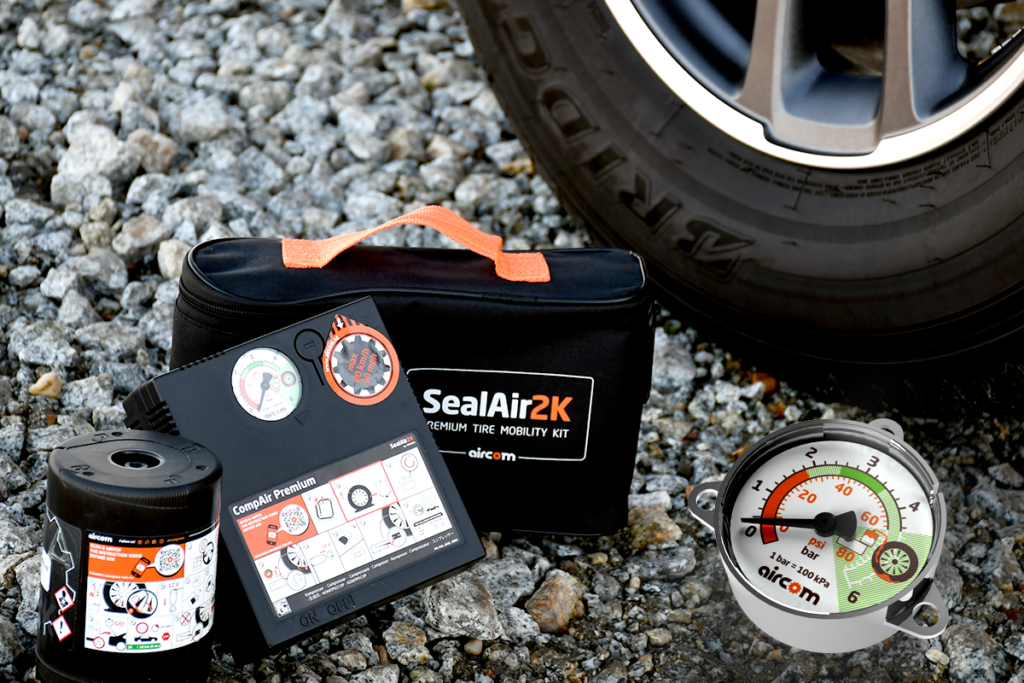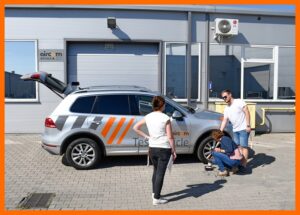Automobile manufacturers determine the tire pressure in the wheels of our car. But how often do drivers wonder how the ambient temperature affects tire pressure? Contrary to appearances, the number of degrees on the thermometer affects what is happening inside the car tires, and how does the weather affect tire pressure.

The colder, the lower the tire pressure
The suggestions of tire manufacturers and car manufacturers do not come out of anywhere. Optimum tire pressure is a guarantee of economical and safe driving. What does this have in common with cold (or heat) outside? Long story short: cold ambient temperatures reduce the pressure in the car’s tires. If the thermometers show 0 degrees Celsius, we will see a decrease of 0.2 bar in the wheels. -10 degrees will reduce the pressure by 0.3 bar. Really cold winters are a rarity these days, but when it cools down to -20 degrees, tires can “slim down” by up to 0.4 bar. Too low tire pressure means less grip, higher fuel consumption, and faster tire wear. Even if we do not notice a change in pressure, we will feel it on our own wallets over time. Now, remember the last time you checked what tire pressure you had in your car.
How does tire pressure fluctuate?
It is worth explaining the reason why the tire pressure fluctuates. Under the influence of low temperatures, the movement of air molecules slows down. They move closer to each other, so they take up less space. On the other hand, at higher temperatures, air molecules “accelerate”. The distance between them increases and thus they take up more space. This leads to the simple conclusion that heating the air molecules inside the tires causes them to expand, which in turn usually leads to an increase in pressure in the tires. Logically, the opposite is true with cold air.

What to look for in summer?
The tire pressure indicator may be helpful (if our car is equipped with it). If the TPMS warning light turns off within a few minutes of driving, tire pressure has apparently returned to normal. If, however, despite driving, the light does not go out, you may need to increase the pressure in the tire reporting the message, i.e. inflate it, e.g. with an air compressor such as the SealAir2K of Aircom. The situation should not be taken lightly, as it is also possible to puncture one of the tires. It’s good to know what tire pressure your vehicle manufacturer suggests. This knowledge will come in handy when we find that the air has come off the wheels and we want to pump it up. As we have already mentioned, the tire pressure indicator is not a mandatory accessory for every car. So, even without it, is it possible to say while driving that the wheels of the car suffer from a lack of air? To some certain extent, yes. This will be suggested to us by increased noise that we did not know before. To find out how much air we have in the tires, all we need is an air compressor – e.g. the SealAir2K from Aircom. It is worth having such a compressor in your vehicle’s basic equipment, because not every gas station has such a device.
Pressure in winter
How high should the tire pressure be? In winter, tire manufacturers recommend keeping the pressure in the range of 2.2 – 2.4 bar. This applies to both the front and rear axles of the car. Information suggesting the correct tire pressure should be found in the form of a sticker in various places of the car. What kind? It depends on the brand and model. This can be the inside of the fuel filler flap, glove box, sill, pillar, or a seat near the driver’s door. In winter, we can prophylactically increase the pressure by 0.2 bar compared to that recommended value in summer. Despite this, you can find advice to reduce the pressure in winter tires in winter. Such advice is justified by the allegedly better grip of the tire to snow. Spreading such information is not only wrong but also dangerous. Driving in winter on under-inflated tires reduces traction rather than improving it. The incomplete inflated tire is not making proper contact with the road. It sticks to it mainly with its edges, which reduces traction and increases fuel consumption. Of course, in high-performance sports in which four-wheel drive vehicles compete, there is deliberate pressure relief in the tires. This, however, is due to the fact that these vehicles usually move on tracks that require a completely different approach.
In conclusion …
We have already told you the consequences of driving with poorly inflated tires. It is also disadvantageous to use the car when the tire pressure is too high. Prolonged driving can then lead to a deformation of the tire tread. As a result, a bulge is likely to appear in the center of the tread. This will reduce the contact area of the tire with the ground. Not only will the grip deteriorate, but also the driving comfort. The correct procedure to avoid punctures is simple and consists in regularly checking the tire pressure of our car correctly. It is helpful getting a portable compressor (eg SealAir2K tire repair kit), with which you can easily check the pressure and inflate the tire, in all conditions and without the need to look for a suitable gas station or so with specialized equipment. This will help us keep our tires safe and ensure a long life. Such foresight prevents unnecessary dangers while driving.





